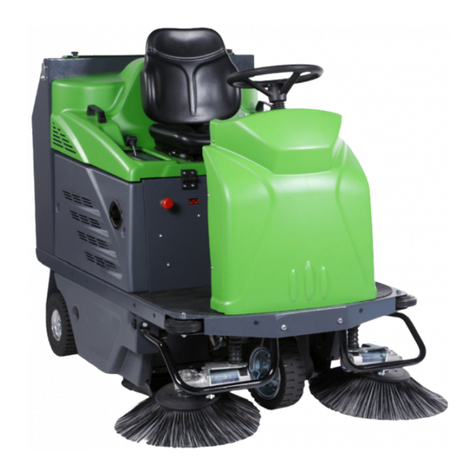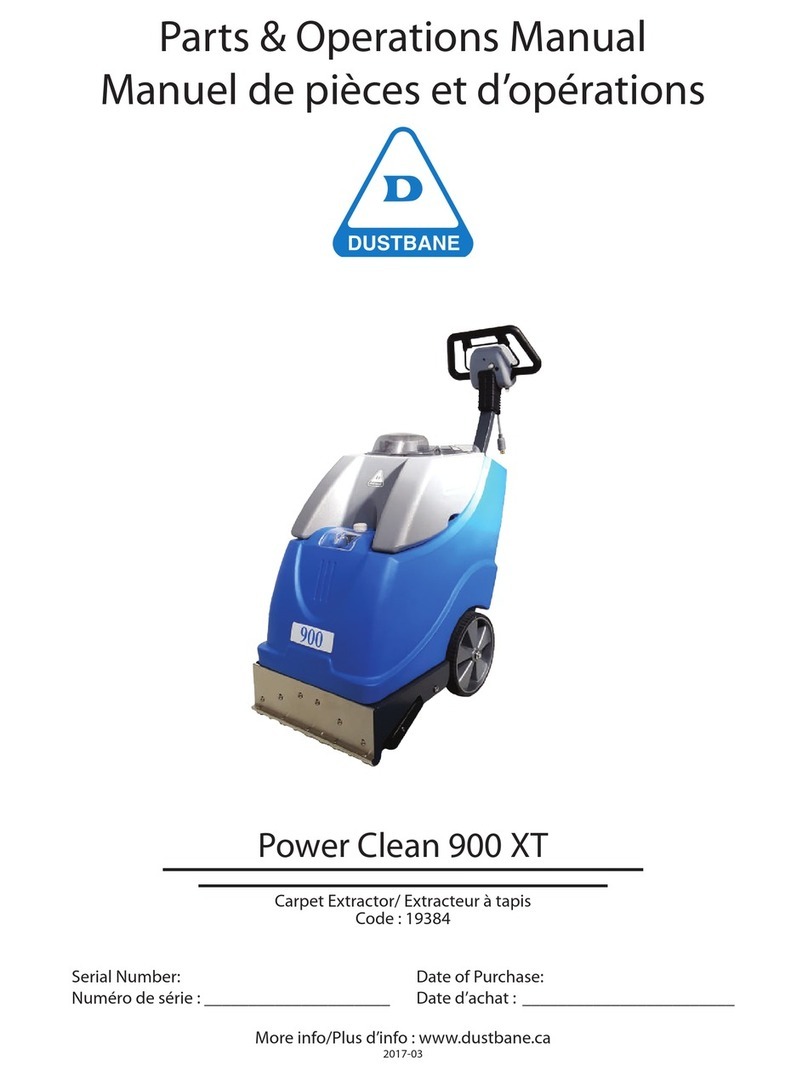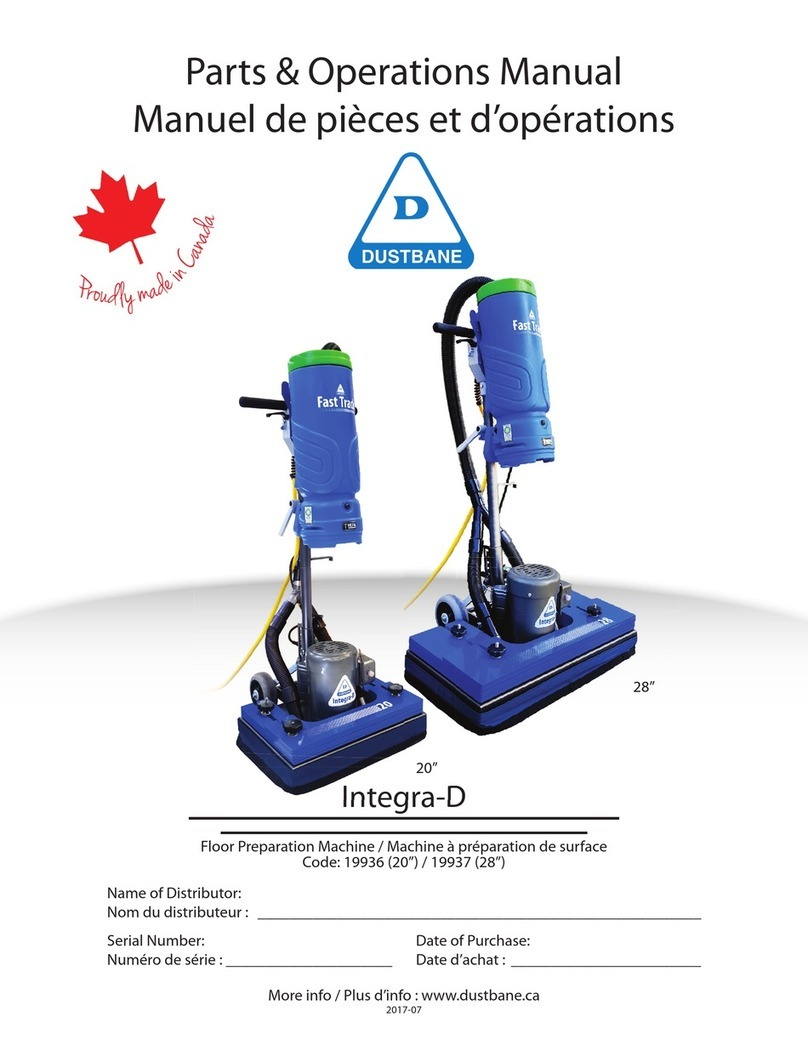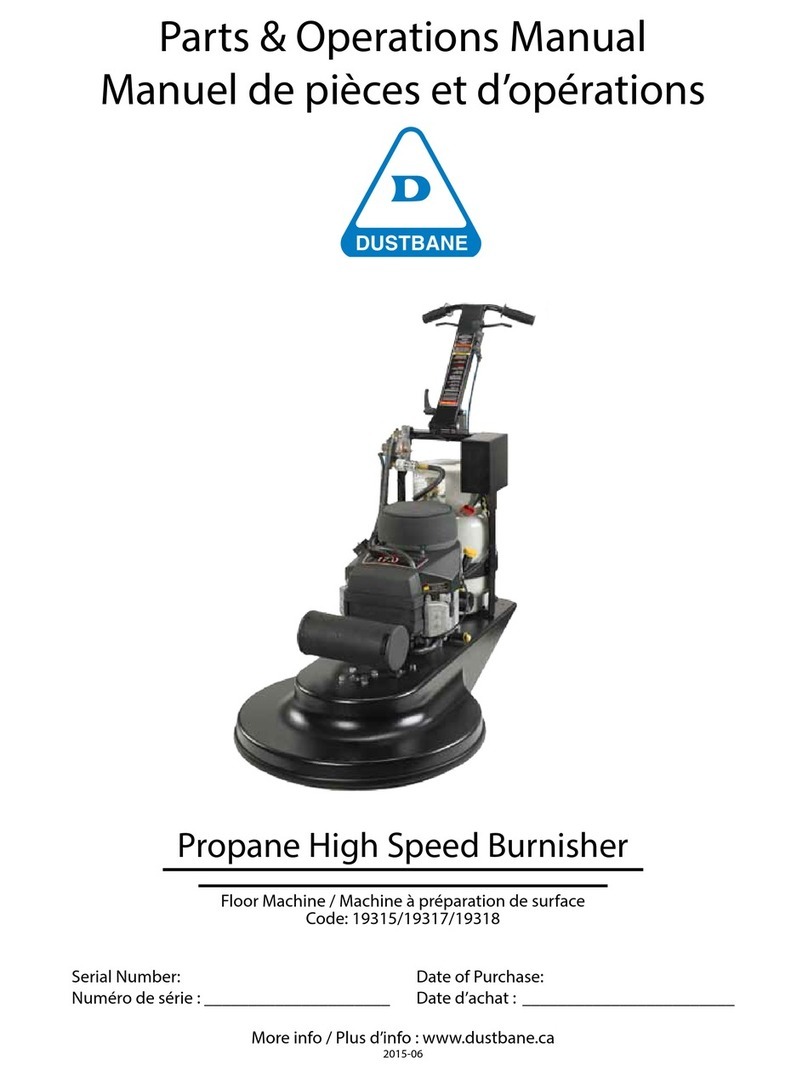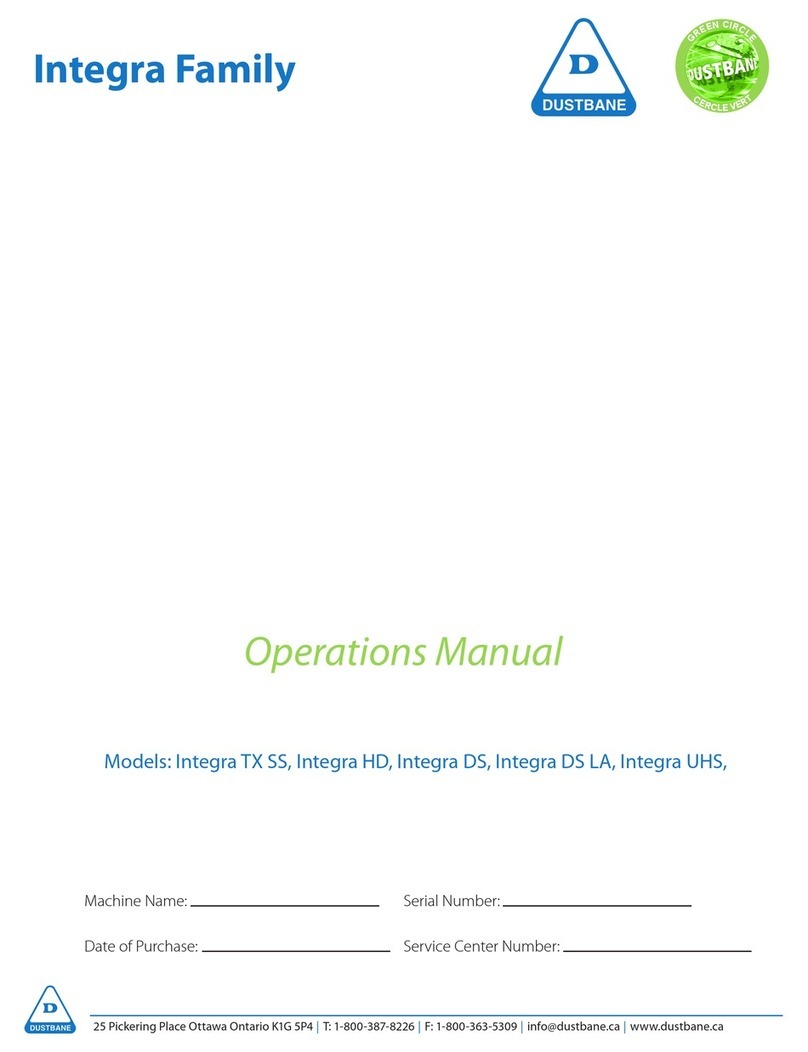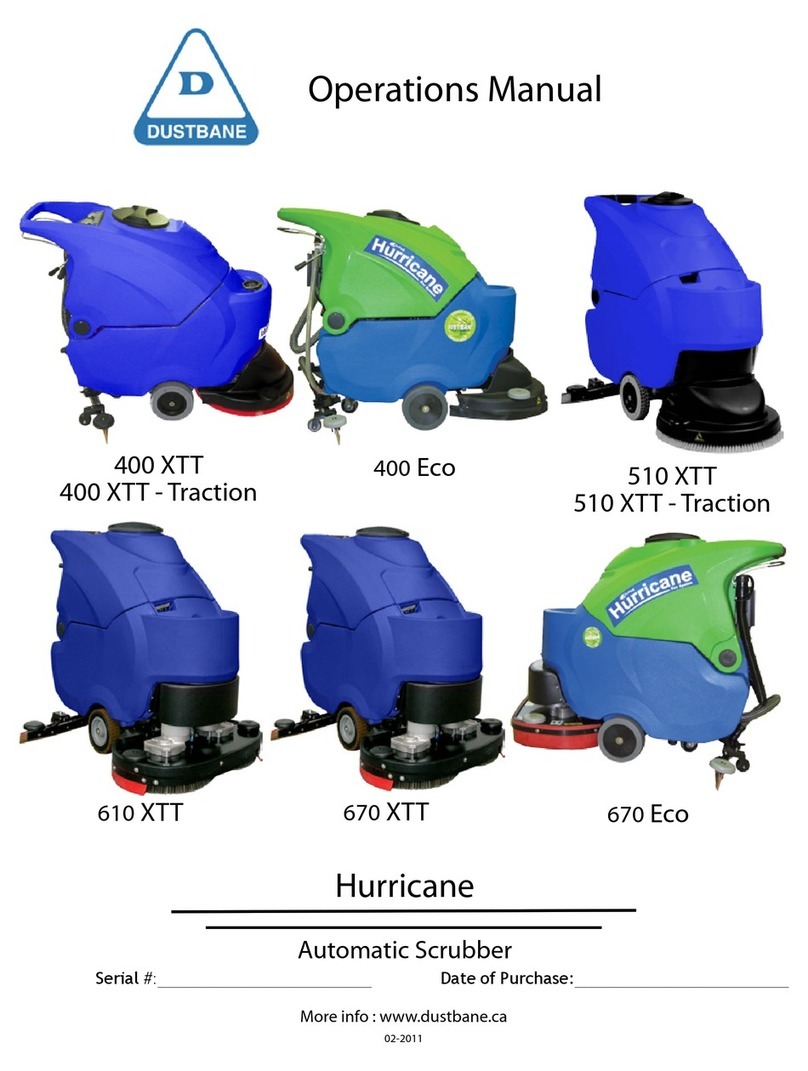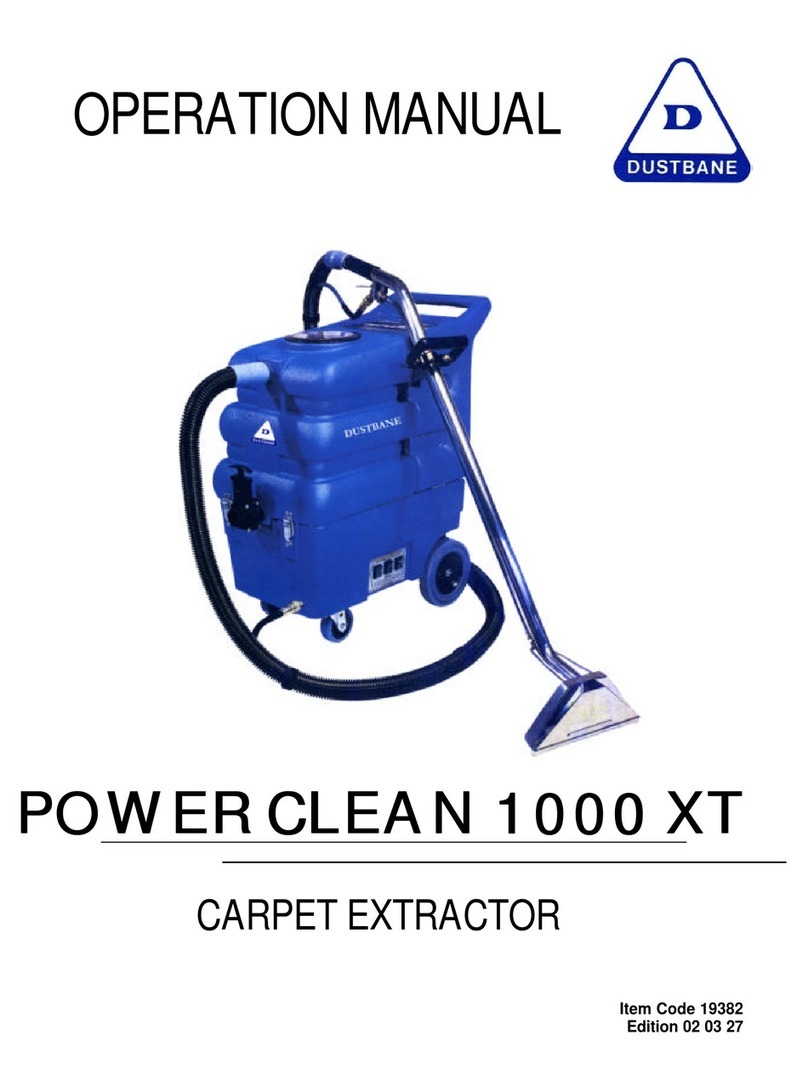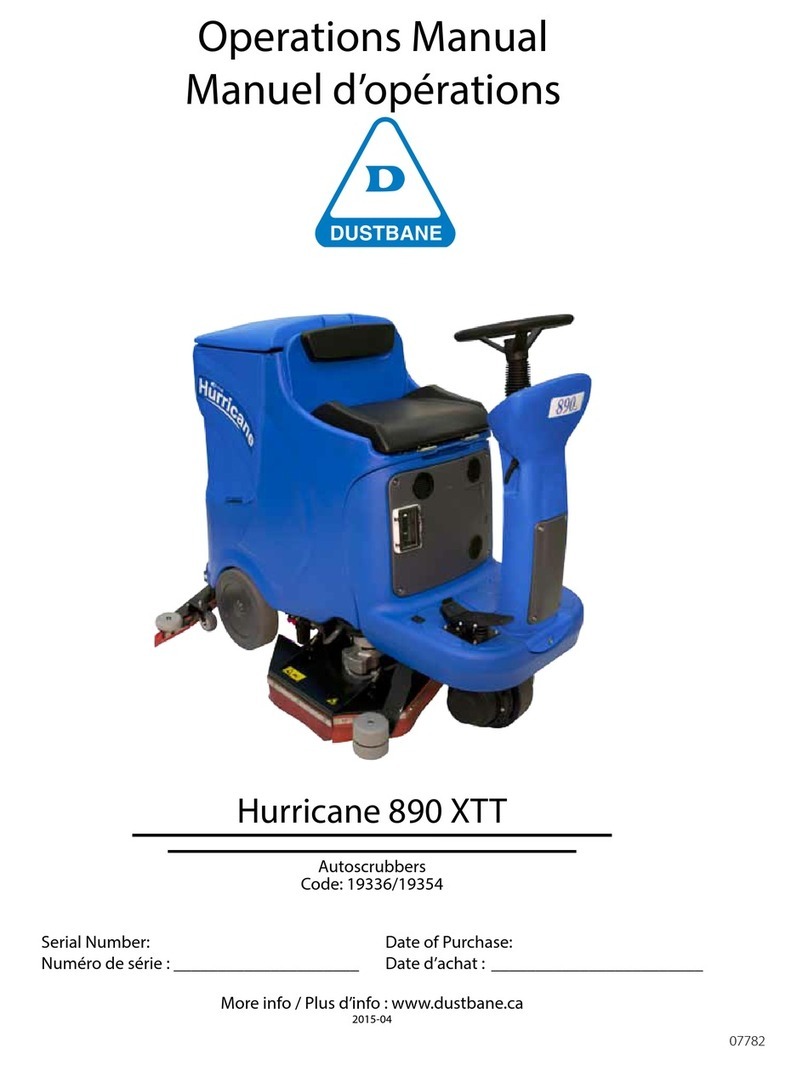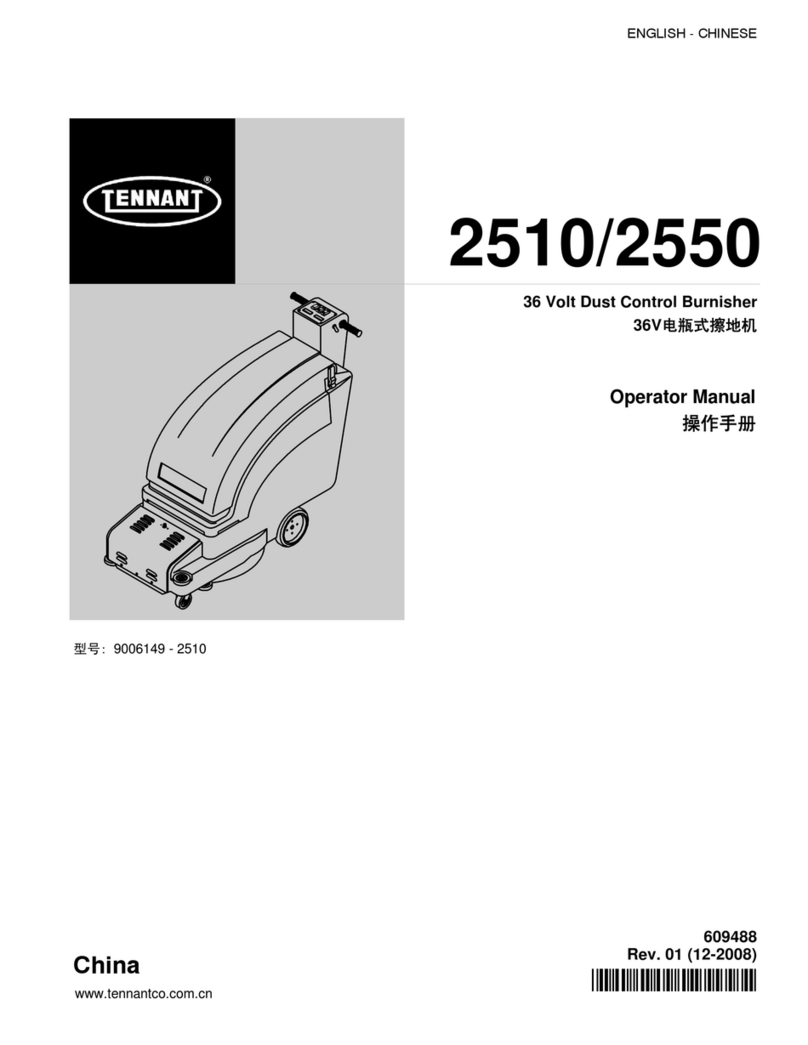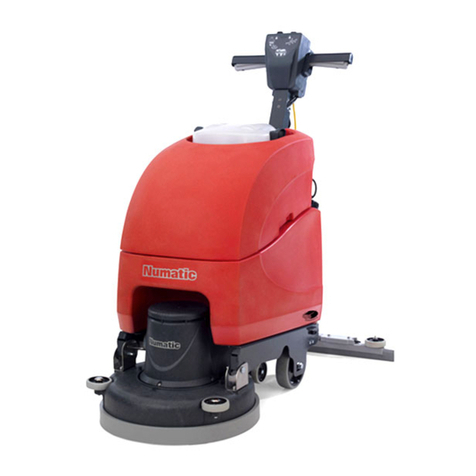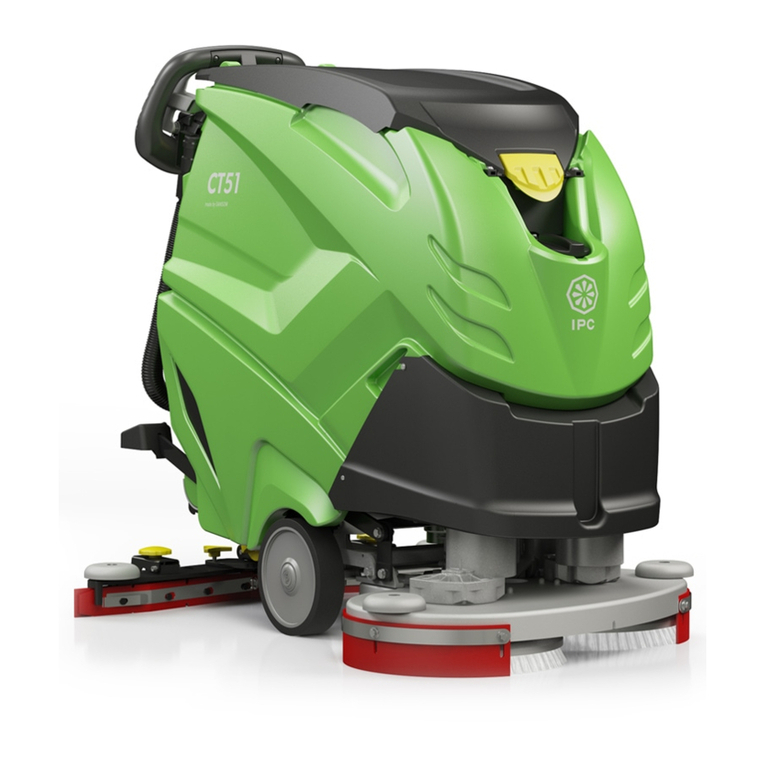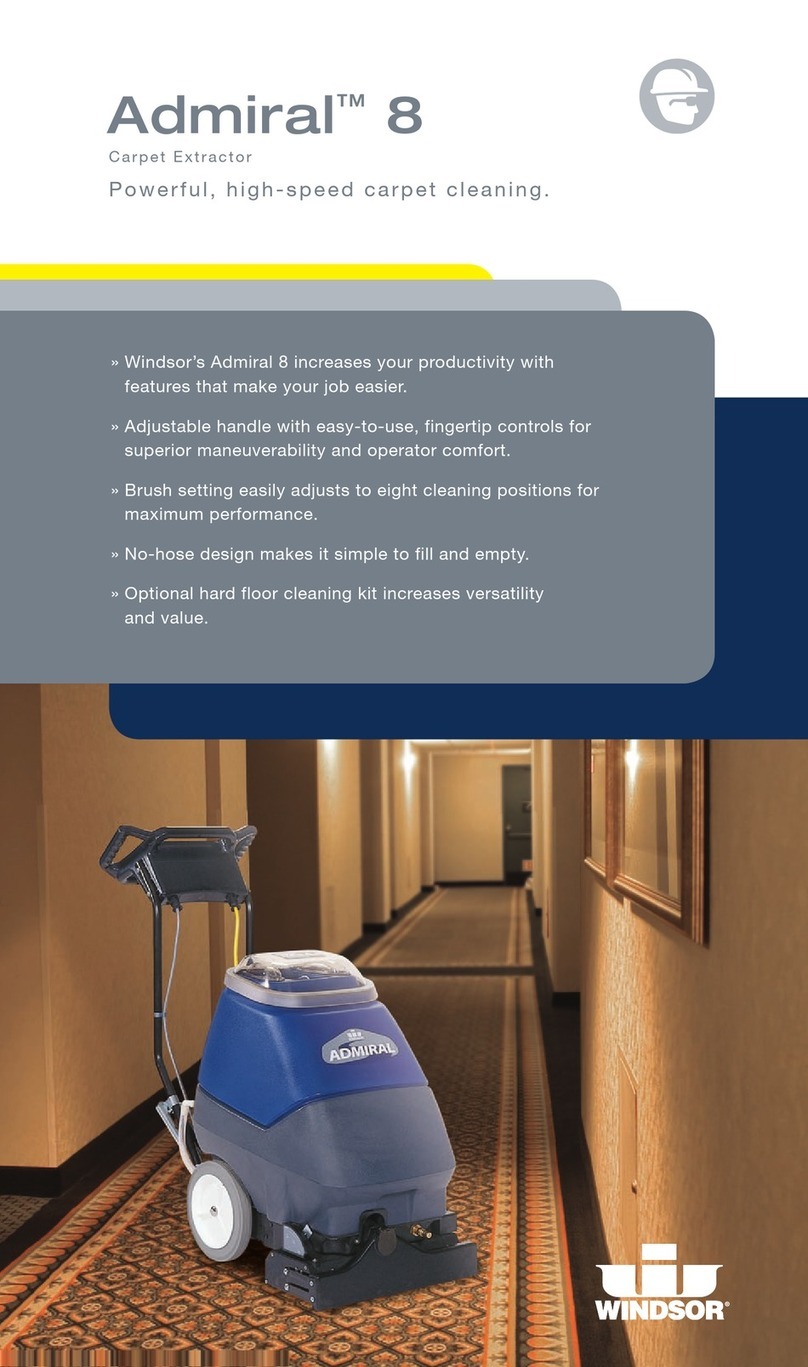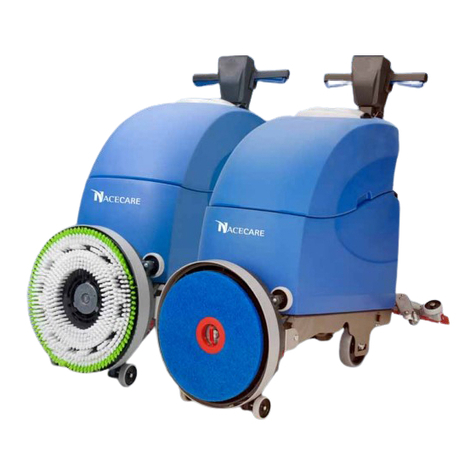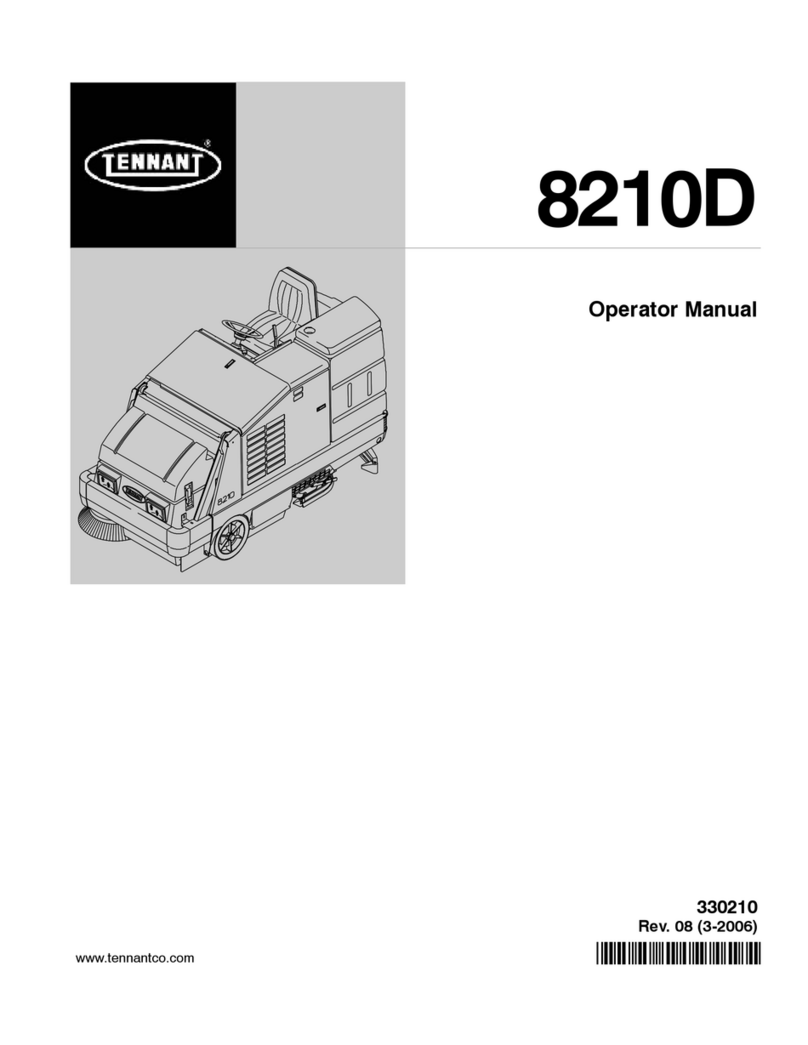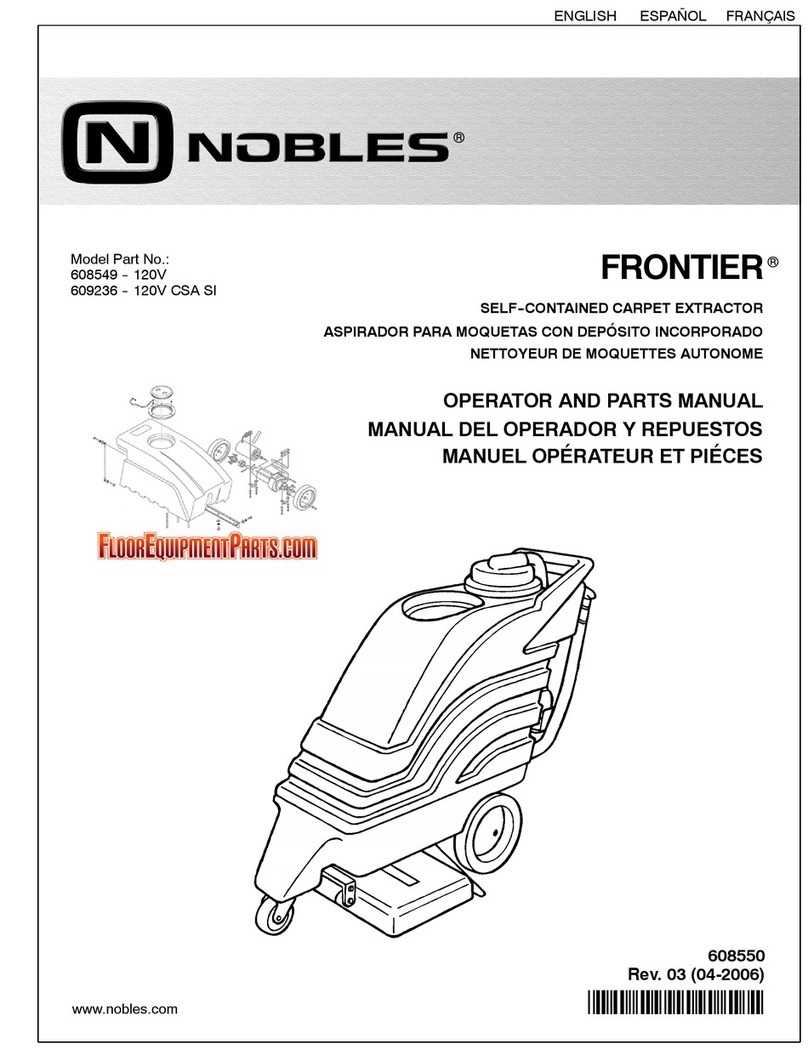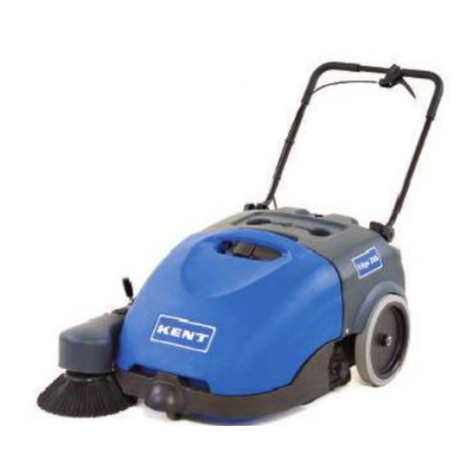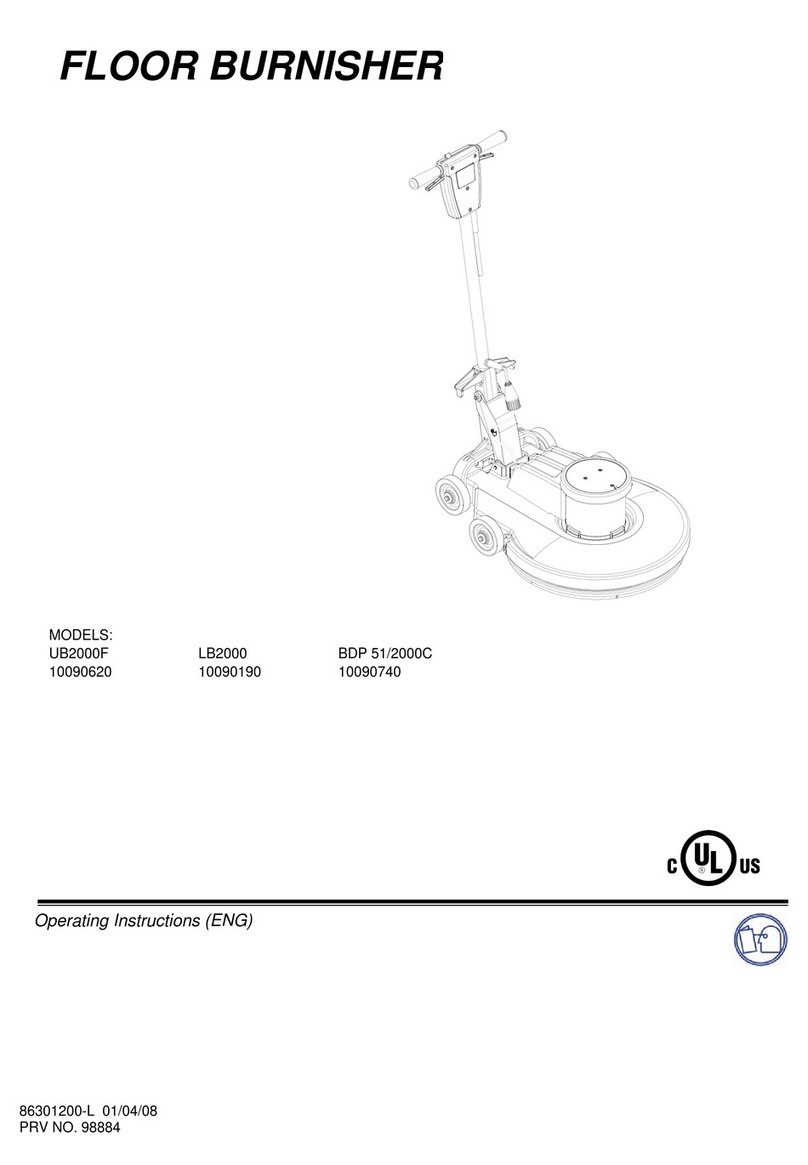
5
ENGLISH
Optional units
Hour counter: the hour counter accessory is xed to the control panel (g. 4, ref. 1). It displays the number of brush operating hours
Accessories
• Bristle brushes/rollers: used for washing delicate oors and for polishing;
• Polipropilene brushes/rollers: used for normal oor washing;
• Tynex brushes/rollers: used to remove accumulated stubborn dirt on resistant oors;
• Drive discs: allow the use of the following discs:
• yellow discs: used for washing and polishing marble and similar surfaces;
• green discs: used for washing of resistant oors;
• black discs: used for thorough washing of resistant oors with stubborn dirt.
Safety Standards
Read the User’s manual carefully before proceeding with start-up, use, maintenance, routine maintenance or any other operations on the
machine. Stick to all the instructions contained in this Manual (especially those regarding danger and warning) and observe the safety
plates attached on the machine. The manufacturer declines all responsibility for injures to persons or damage to things deriving from the
non-observance of these instructions.
• The machine must be used by trained personnel only, who have shown their skill and have been expressly authorized to use it.
• Persons under eighteen cannot use the machine.
• This machine must not be used for any other purpose than that for which it has been expressly manufactured. Assess the type
of building in which it will be used (e.g. pharmaceutical and chemical companies, hospitals, etc.) and scrupulously respect the
regulations and conditions in force.
• DO NOT use the machine in places that are not adequately lighted, in environments with danger of explosions, on public roads,
in the presence of dirt harmful to health or improper environments.
• The suitable temperature for the use of the machine ranges between +4°C and +35°C; when the machine is not used, the
temperature range is between +0°C e +50°C.
• The humidity range for the machine under any conditions varies between 30% and 95%.
• NEVER use or suck up inammable or explosive liquids (e.g. petrol, fuel oil, etc.), inammable gases, dry dust, acids and solvents
(e.g. solvents for paints, acetone, etc.) even if diluted. Never suck up any burning or white-hot objects.
• DO NOT use the machine on slopes or ramps higher than 2%; in the event of light slopes, do not use it transversally; handle
it with extreme care and do not reverse. When driving along ramps or heavier slopes, take great care to avoid overturning or
uncontrolled acceleration. Overcome ramps and/or steps exclusively with the brush head and squeegee lifted.
• NEVER park the machine on slopes.
• The machine must never be left unmanned with the motors running; before abandoning the machine, switch the motors o,
ensure that it cannot move accidentally, engage the parking brake and remove the key from the ignition.
• When using the machine mind the presence of people particularly children in the environment where you are working.
• DO NOT use the machine to carry persons/things or to tow things. Do not drag the machine.
• NEVER lay things on the machine for any reason.
• DO NOT obstruct the air vents and heat dispersion openings.
• DO NOT remove, modify or elude the safety devices.
• Various and unpleasant experiences have shown that people wear or carry various objects capable of causing serious accidents:
before starting to work, remove trinkets, watches, neckties or other such things.
• Always use individual safety protections: apron or protective suit/overalls, non-slip waterproof shoes, rubber gloves, protective
goggles and caps, face mask to protect the respiratory system.
• DO NOT put the hands in between moving organs.
• DO NOT use detergents dierent from those provided for, and stick to the instructions indicated on the respective safety
sheets. Keep detergents in a safe place, inaccessible to children, and in case they come in contact with the eyes, wash them
immediately with plenty of water or, if swallowed, call for a doctor immediately.
• Make sure that the plugs for the power supply of the battery chargers are properly grounded and protected by magnetothermal
switches and dierentials.
